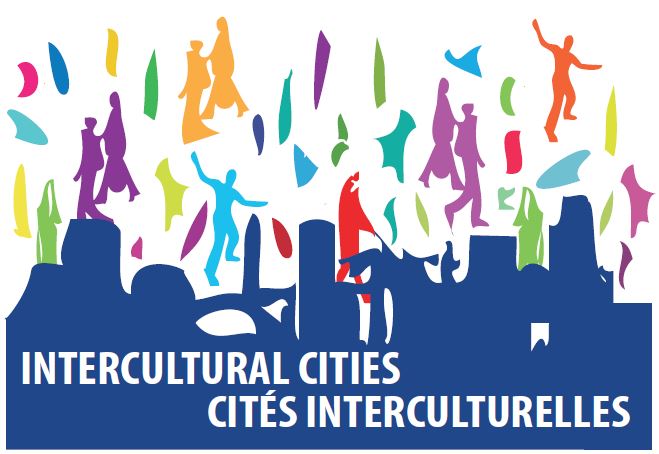Purpose:
The Barcelona Intercultural Plan (2010) was a mandate of the City Council’s Immigration Working Plan 2008 and its main goal was to define a clear intercultural policy strategy about how the city faces the challenges posed by the increase in sociocultural diversity for the next 15 years.
The new and current Plan (2021-2030) has been promoted by the sixth Deputy Mayor’s Office for Culture, Education, Science and Community and the Commissioner for Intercultural Dialogue and Religious Pluralism, Barcelona City Council.
The Plan, which updates and replaces the previous Barcelona Interculturality Plan provides a strategic action perspective for 2021-2030 that aims to be the framework upon which all municipal policies must be based to include the intercultural perspective and adapt their strategic lines and goals to its programmes and lines of action.
Stimulus/Rationale:
The Interculturality Plan was developed as a “local global strategy to promote interaction, being the best way of guarantying normalized socialization of diversity in all spheres and spaces of the city”. Without interaction there is no socialization and without socialization citizens miss the possibility of reinforcing the common and shared aspects that lead them to individual and social development. Interaction is normally determined by many factors: if there is a real rights and obligations equity, if there is social mobility, a common language, if public spaces promote inclusion or exclusion, etc. The purpose of the Plan of Interculturality is to provide for a scenario where citizens from diverse origin are able to interact and socialize in a positive and freeway.
Diversity is categorised clearly as an added value for society, and follows the focus of diversity advantages, because it means creativity and social and urban innovation that contribute to the city development, a community of citizens that interact in an urban space.
Process:
The elaboration of the Barcelona Intercultural Plan was in itself intercultural and transversal: over 3,000 people and 250 organisations collaborated to create the plan through an interactive web in which participated all section of the City Council as an active agent along with all citizenship that need to be involved in the intercultural process. Transversality was one of the key questions in terms of methodology. Every area of the Barcelona City Council participated in the elaboration by observing their policies through intercultural lens, and giving answer to improve its service and policies from an intercultural approach.
This Plan was based in a triangle of principles: equity, recognition of diversity and positive interaction. These were the three pillars that guided the Immigration Plan (2012-2015) that moved from reception strategies to accommodation diversity strategies in an urban context, where immigrants are not seen any longer as passive and assisted actors but as participative citizens in all spheres of the city. The Plan envisaged as well the creation of an institutional innovation: Espai Avinyó, a cultural space aimed at becoming a benchmark for interculturalism in Barcelona.
In July 2021, Barcelona’s second Intercultural Plan for 2021-2030 was presented. The plan was adopted together with government measures to “advance towards interculturalism,” making it both an intercultural strategy and an intercultural action plan. It includes the definition of its strategic vision as well as a set of actions for implementation. At the strategic level, it defines five strategic axes based on the principles of interculturality. Within these axes, the plan identifies 26 specific objectives and 106 specific measures which provides a strong link between the strategic objectives and tangible actions and measures to be implemented.
The city is supporting its plan with the necessary human and financial resources. The total budget for government measures to advance towards interculturalism (2020-2023) is € 14,861,957.53 over four years. There is now an annual budget of 500,000 euros for intercultural grants to facilitate intercultural actions and projects by the network.
The Intercultural Plan process was participatory. Fifteen online debate sessions were held where small discussion groups identified the main challenges and the extent to which municipal actions had been targeted at equal rights, recognition of diversity, positive interaction and intercultural dialogue. Online interviews were also conducted with experts and practitioners in different fields. In addition, an online survey was carried out on the decidim.barcelona platform to explore citizens’ views in relation to equal rights, opportunities, equity and non-discrimination; interaction and intercultural dialogue and the recognition of diversity.
Impact:
The new plan provides an updated analysis of the city context and responds to the latest developments in the field of intercultural policies. A thorough diagnosis was conducted from a socio-demographic perspective which included a Qualitative analysis and interviews with key agents and stakeholders.
Barcelona has taken learning from its first Intercultural plan and strengthened the evaluation elements of the new Plan for 2021-2030. The government measure to “advance towards interculturalism” establishes guidelines for evaluating the Plan, including a system of indicators, monitoring and evaluation, and an external evaluation of the Plan that will be commissioned with the participation of social agents from the city every 3-4 years.
The Department of Interculturality and Religious Pluralism is responsible for implementing the Plan. The Bcn Interculturality Programme (PROGBI), from this department, is the main programme for responding to the Plan from its different lines of action: Intercultural Training, Espai Avinyó, Territorial Action, Transversal Action, Intercultural Communication and the Bcn Anti-Rumour Strategy.
Every year, this programme draws up an annual report on its different areas of work and highlights the main actions carried out.
Key reference documents:



